The Functions of World Timers and GMT in Mechanical Watchmaking: Reflecting Historical Changes in Travel Methods
The gentle ticking of a finely crafted mechanical watch represents more than just the passing of seconds—it embodies centuries of human ingenuity created to solve real-world problems. Among the most fascinating complications in horology are those designed to track multiple time zones simultaneously: the World Timer and the GMT. These intricate mechanisms tell a story not just of technical achievement, but of mankind's expanding horizons and the evolution of global travel.
The Origins of Travel and Early Timekeeping Challenges
In the 15th century, as European explorers ventured across vast oceans, navigation became a matter of life and death. The quest for accurate timekeeping at sea drove innovations that would forever change horology. The marine chronometer, perfected by John Harrison in the 18th century, finally solved the longitude problem that had plagued sailors for centuries. A captain could now determine his ship's east-west position by comparing local time (observed from the sun) with the "home" time kept by the chronometer.
While seafarers relied on these precision instruments, land travelers faced different challenges. As horse-drawn coaches gave way to steam locomotives in the 19th century, the variability of local time became increasingly problematic. A journey that once took weeks could now be completed in days, but each town still set its clocks according to local solar time (it is noon at a specific location when the sun is highest in the sky). This created the curious situation where passengers might adjust their watches dozens of times during a cross-country journey.
The standardization of time zones came as a direct response to the railroad era. In 1884, the International Meridian Conference in Washington established the system of 24 time zones we still use today, with Greenwich, England serving as the prime meridian. This global agreement laid the groundwork for the complications that would later help travelers navigate these artificial divisions of time.
The Birth of the GMT and World Timer Complications
The early 20th century witnessed unprecedented acceleration in travel capabilities. Transatlantic steamships reduced crossing times from weeks to days, while the nascent aviation industry promised even greater speeds. As travelers crossed multiple time zones more frequently, watchmakers began developing solutions to track different times simultaneously.
The World Timer complication emerged from the brilliant mind of Swiss watchmaker Louis Cottier in the 1930s. His ingenious system featured a rotating 24-hour ring surrounded by a fixed disc bearing the names of major world cities. At a glance, the wearer could determine the time in any time zone around the globe. Patek Philippe was among the first to adopt Cottier's invention, creating some of the most coveted timepieces in horological history.
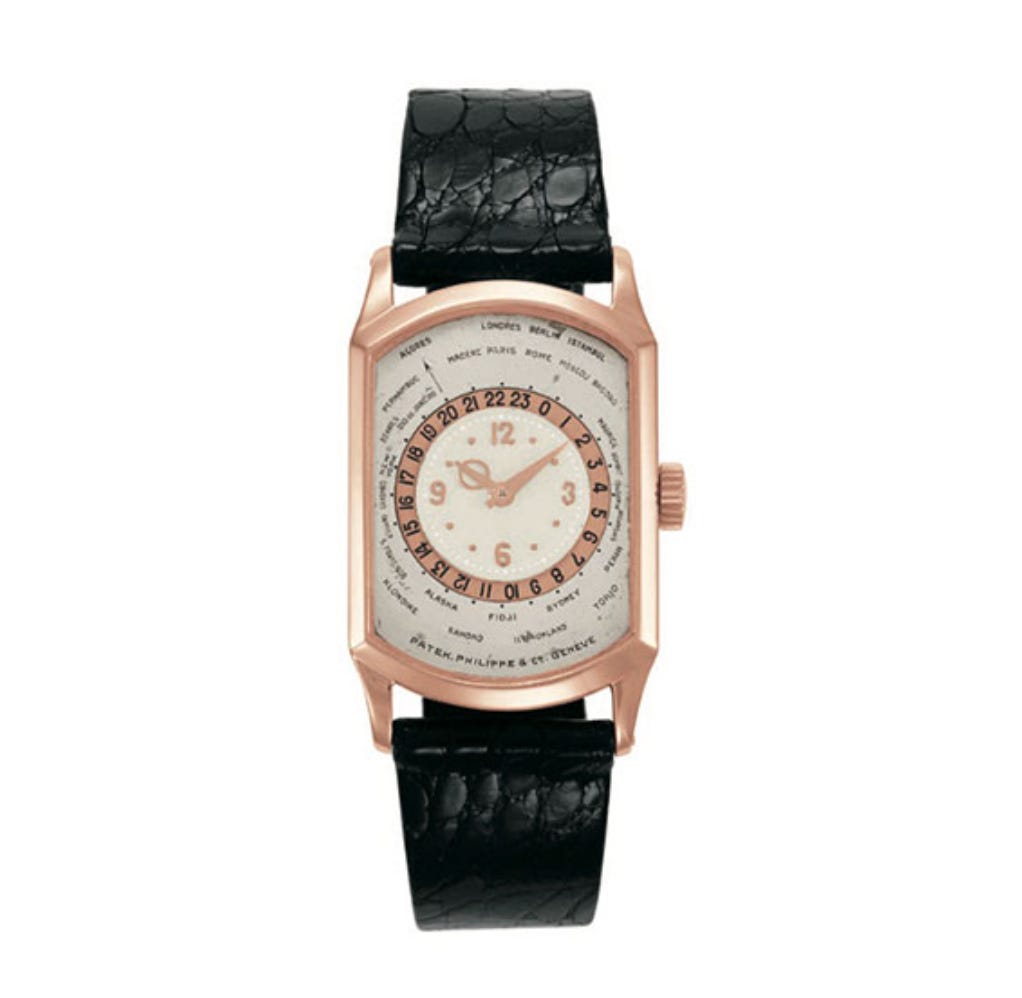
While World Timers offered a comprehensive solution, a more focused approach arrived in 1954 when Rolex introduced the GMT-Master. Developed specifically for Pan American Airways pilots flying the new transatlantic routes, this watch added a fourth hand that completed one revolution every 24 hours, along with a rotating bezel marked with a 24-hour scale. This elegant solution allowed pilots to track both home time and destination time without the complexity of a full World Timer.
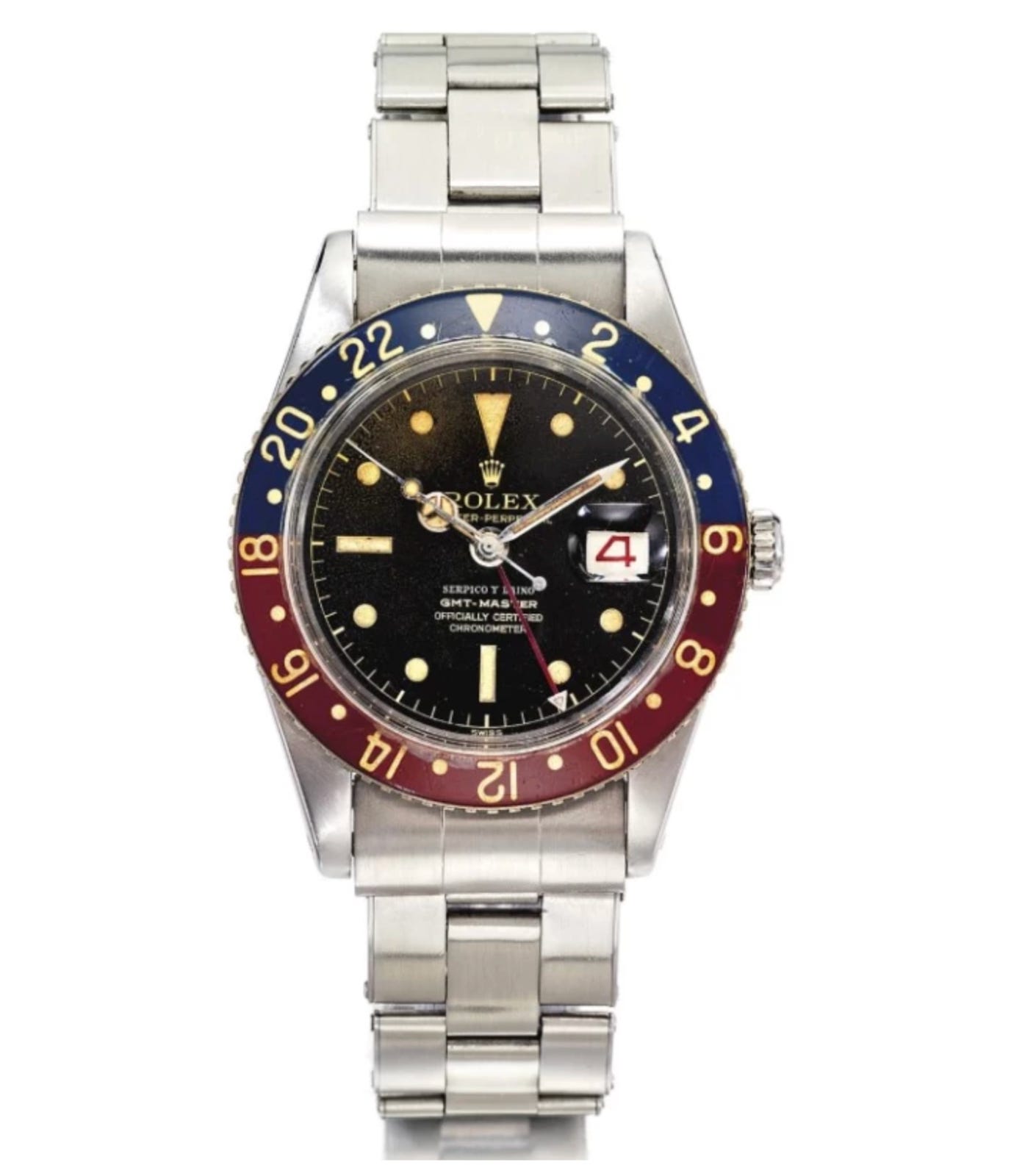
The Golden Age of Aviation and the Rise of Dual-Time Watches
The post-war period saw commercial aviation enter its golden age. The introduction of jet aircraft in the 1950s further compressed travel times, making transcontinental and intercontinental journeys commonplace for business travelers and tourists alike. The GMT watch became an essential tool for pilots and passengers alike, helping them manage the disorienting effects of rapidly crossing time zones.
The Rolex GMT-Master, with its distinctive blue and red "Pepsi" bezel representing day and night hours, became an icon of this era. As the Jet Age reached its zenith with the introduction of the supersonic Concorde in 1976, travelers could cross the Atlantic in under three hours, making accurate multi-time tracking more crucial than ever.
GMT watches also found applications beyond commercial travel. Military pilots relied on them for mission timing, while NASA astronauts wore them in space. The Omega Speedmaster Professional may be known as the "Moonwatch," but many astronauts also utilized GMT functions to track mission elapsed time against Houston Control time.
A perfect example of a contemporary GMT watch that honors this heritage while incorporating modern advancements is the Tudor Black Bay GMT. Released in 2018, it features the classic Pepsi bezel color scheme that harkens back to the original Rolex GMTs, but with Tudor's distinctive snowflake hands and robust in-house movement. Its ability to track three time zones simultaneously (using the bezel and the 24-hour hand) demonstrates how the fundamental GMT concept continues to evolve while remaining true to its utilitarian origins.
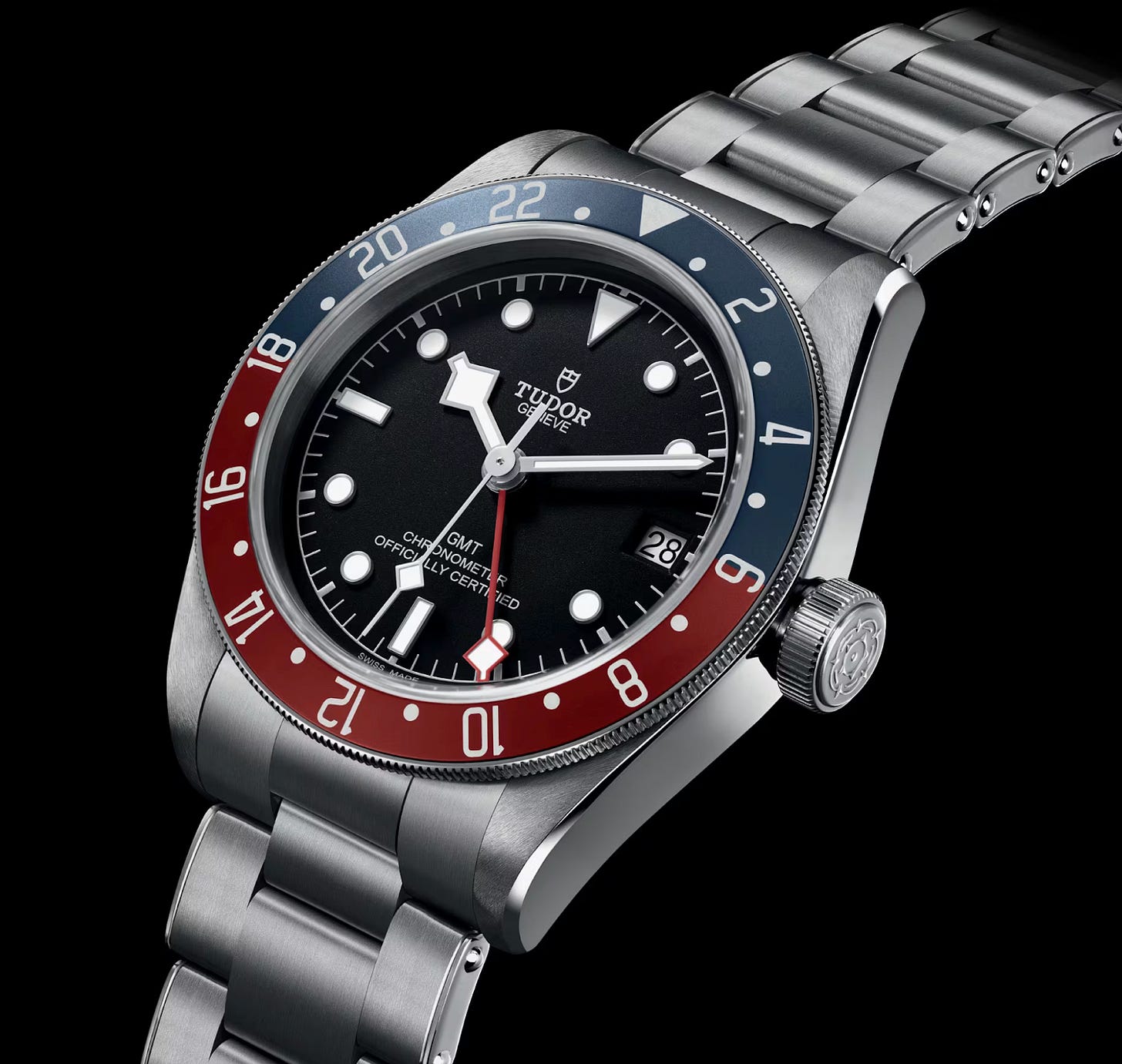
The Role of World Timers in the Era of Globalization
The late 20th century ushered in unprecedented global connectivity. As businesses expanded internationally and the 24-hour economy became reality, the ability to know the time across multiple locations simultaneously became more valuable than ever. The World Timer, once a specialized tool for a select few, found renewed purpose in the wrists of global business leaders and frequent travelers.
Prestigious watchmakers elevated the World Timer from pure utility to high art. Patek Philippe's World Time series, Vacheron Constantin's Traditionelle World Time, and Jaeger-LeCoultre's Geophysic Universal Time showcase how this complication has become a canvas for expressing both technical mastery and artistic refinement. Many feature elaborately decorated dials with guilloché patterns, enamel world maps, or engraved city discs.
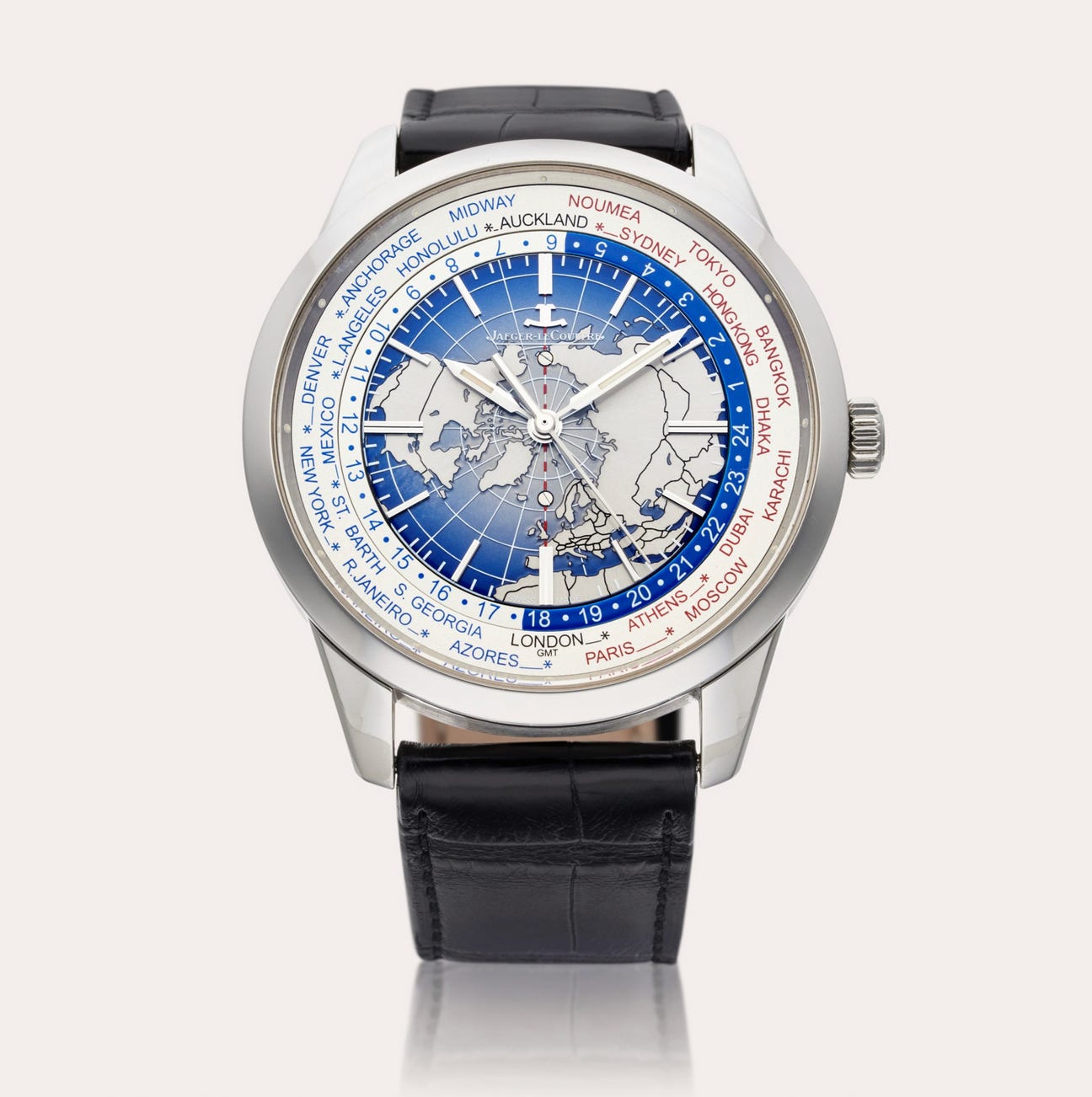
Technological innovations have continued to refine these complications. Brands like Montblanc and Frédérique Constant have developed user-friendly systems that allow wearers to adjust all time-related indications with a single crown. Others have incorporated annual and perpetual calendar functions to further enhance their worldwide utility.
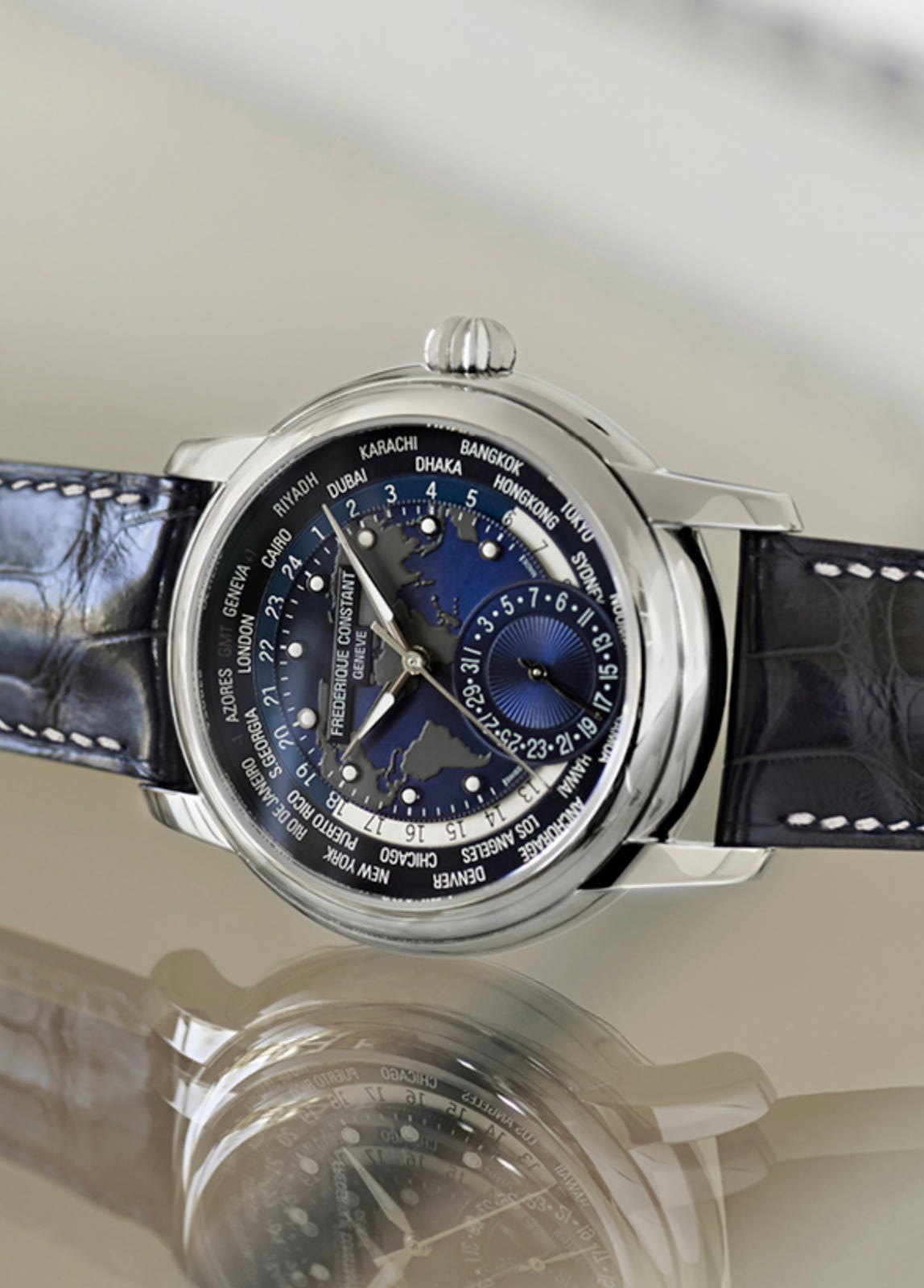
One exemplary modern World Timer is the Patek Philippe Ref. 5231J World Time with its cloisonné enamel dial depicting a map of Europe, Africa, and the Americas. Beyond its technical excellence—allowing simultaneous reading of all 24 time zones with a single push-button to update the city disc when traveling—it represents the transformation of a utilitarian complication into an artistic masterpiece. The hundreds of hours of skilled craftsmanship required for the enamel work alone reflect how these watches have transcended their original purpose to become expressions of cultural heritage and human achievement.
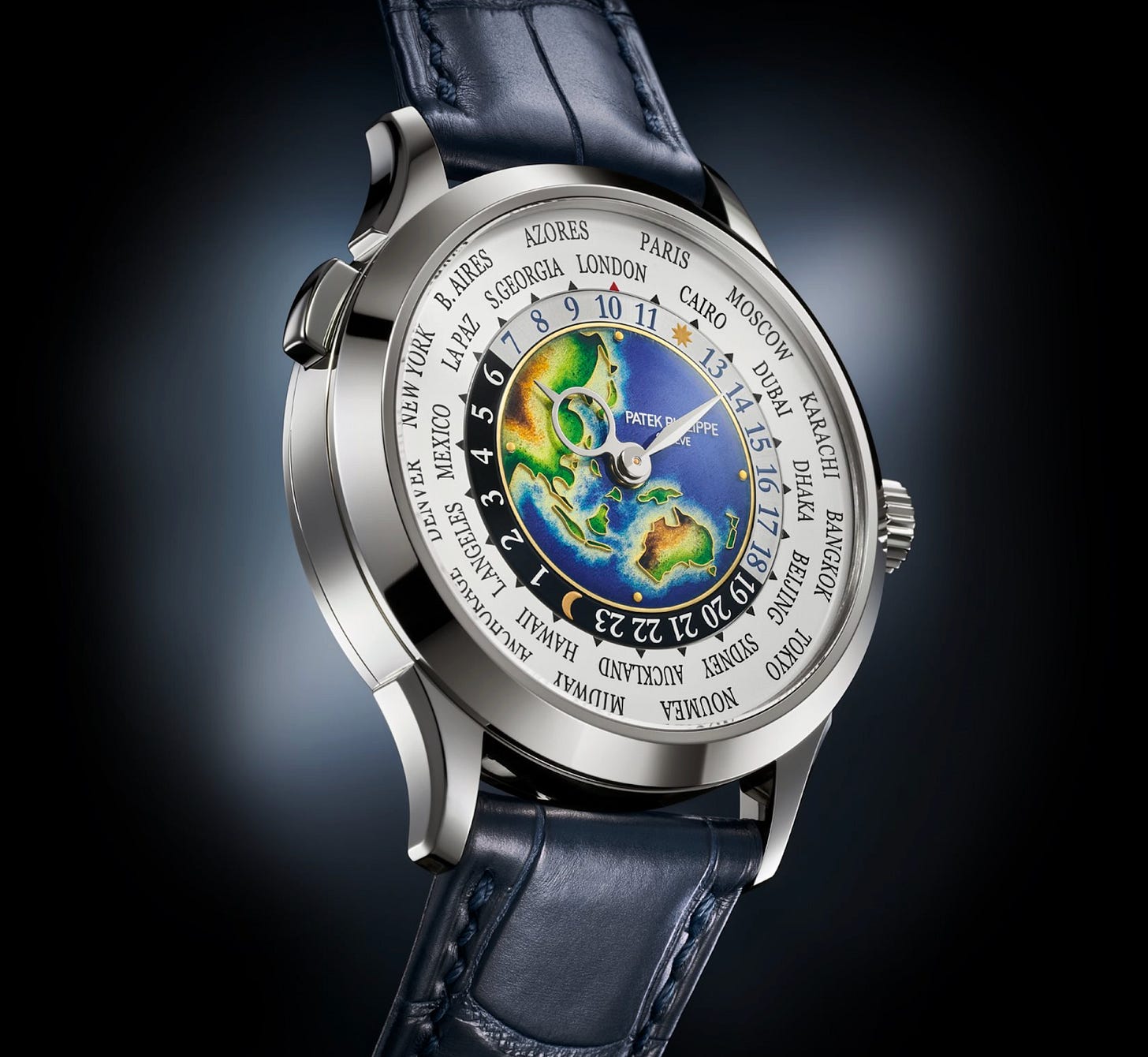
Conclusion
The evolution of World Timers and GMT watches mirrors humanity's journey from isolated communities to an interconnected global society. As sailing ships gave way to steamers, propeller planes to jets, and now as digital connectivity shrinks our world further, these mechanical marvels have adapted while maintaining their essential purpose.
In an age when smartphones automatically update to local time and smartwatches sync with atomic clocks, the continued relevance of mechanical World Timers and GMT watches might seem puzzling to outsiders. Yet their enduring appeal lies precisely in what they don't do—they don't buzz with notifications, they don't need charging, and they don't become obsolete with the next software update.
Instead, they represent something increasingly rare in our digital age: permanence. A finely crafted mechanical timepiece can mark the minutes of our lives for generations, connecting us not only across geographic distances but across time itself. The World Timer on your wrist today may well accompany your grandchild on journeys to places you never visited, continuing to perform its function with the same reliability and elegance.
As we look to the future of travel—perhaps to commercial space flight or even beyond—we can be certain that the watchmakers of today are already contemplating how to adapt these centuries-old complications to new frontiers. The story of time and travel is far from over, and mechanical watches will continue to mark its chapters, one careful tick at a time.
Author: Sergio Galanti


